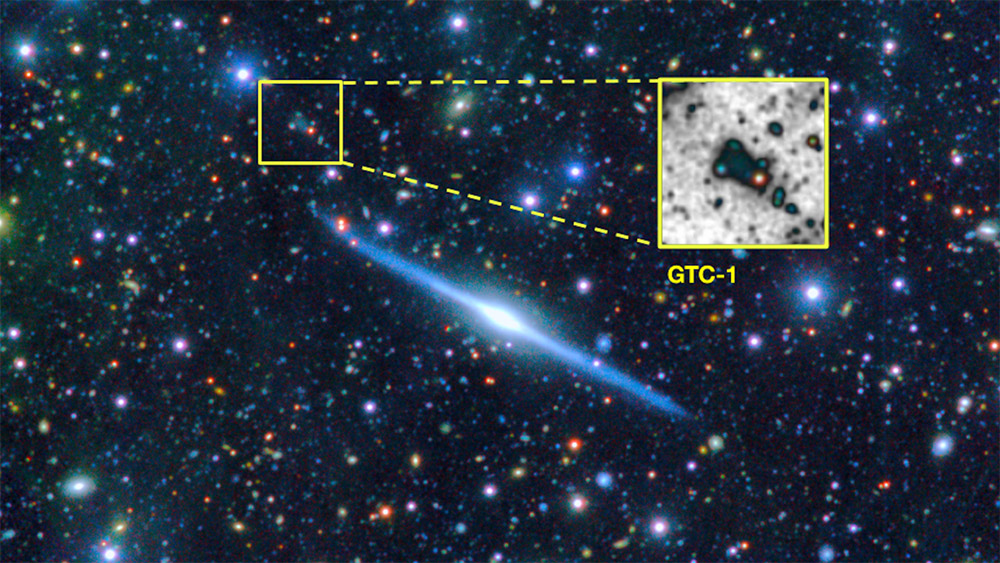Grantecan solves an old puzzle about the brightness of galaxy discs
An international scientific team, including the Instituto de Astrofísica de Canarias (IAC), has detected distortions in the brightness of a galaxy’s disc that could be explained by the gravitational effect of an unknown neighbouring galaxy. Named GTC-1, the satellite galaxy was discovered using ultra-deep images obtained with the OSIRIS camera of the Gran Telescopio Canarias, located at the Roque de los Muchachos Observatory in La Palma. The finding provides a possible explanation for a puzzle about way the light fades out at the edges of galaxy disks, a mystery that has bothered the scientific community for decades. The result is published in the prestigious Astrophysical Journal.

In 1980 astronomers found that when they studied images of galaxies which are edge-on to us, their brightness drops off very sharply at the edges. This truncation of the light was an important clue to the way galaxies were formed. However, it took several decades, and the use of CCD detectors in astronomical observations, to begin to understand this phenomenon.
In the first decade of the new millennium, research groups found that the gas in some galaxy discs, in particular the gas at the edge of the Milky Way, showed a flared structure in which the gas near the disk edge feels less gravity towards the plane of the galaxy, and spreads upwards. Some astronomers proposed that if the stars in the disks also had a flared structure, the brightness of a disk when observed edge-on could show a truncation, unlike the same galaxy observed face-on, although they failed to find flared discs as they expected.
Read more in the original article: IAC
🇵🇹 Versão portuguesa disponível aqui


Leave a Reply